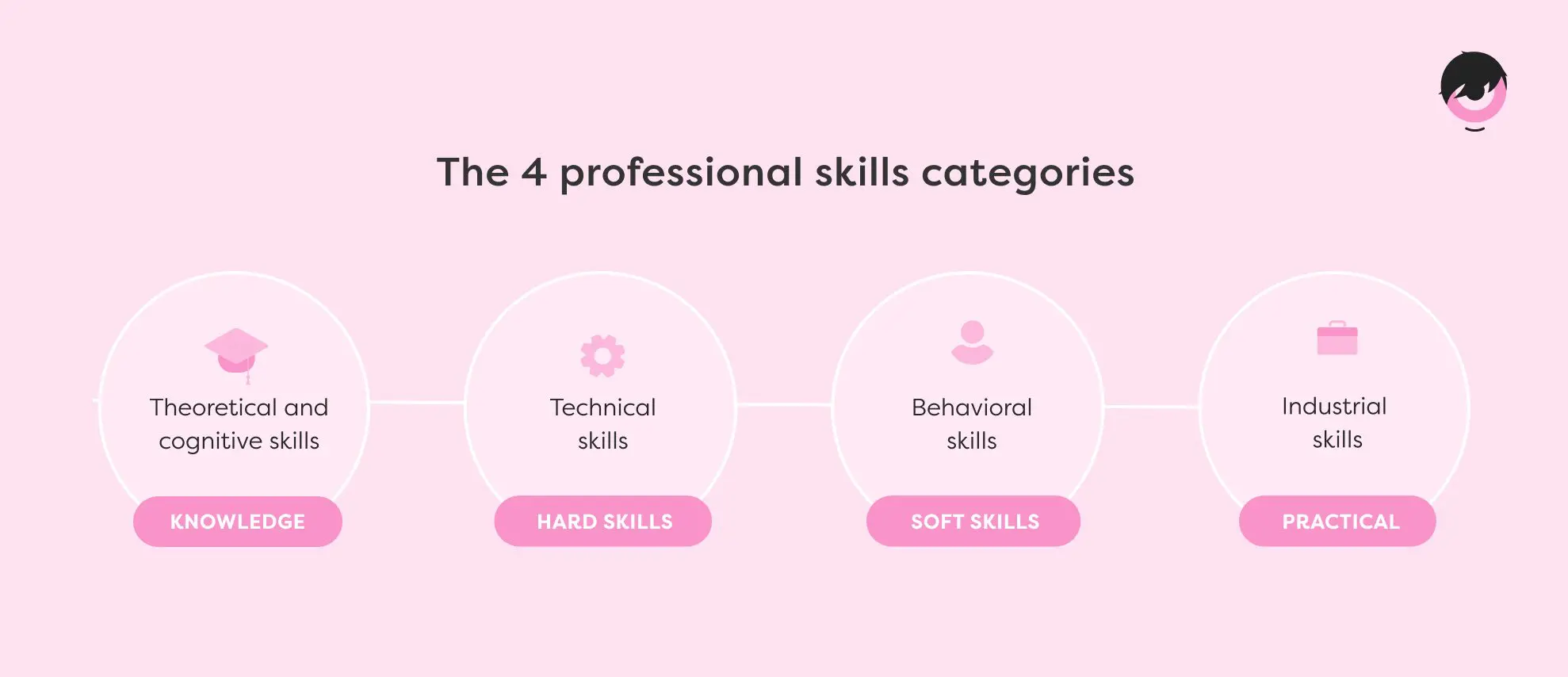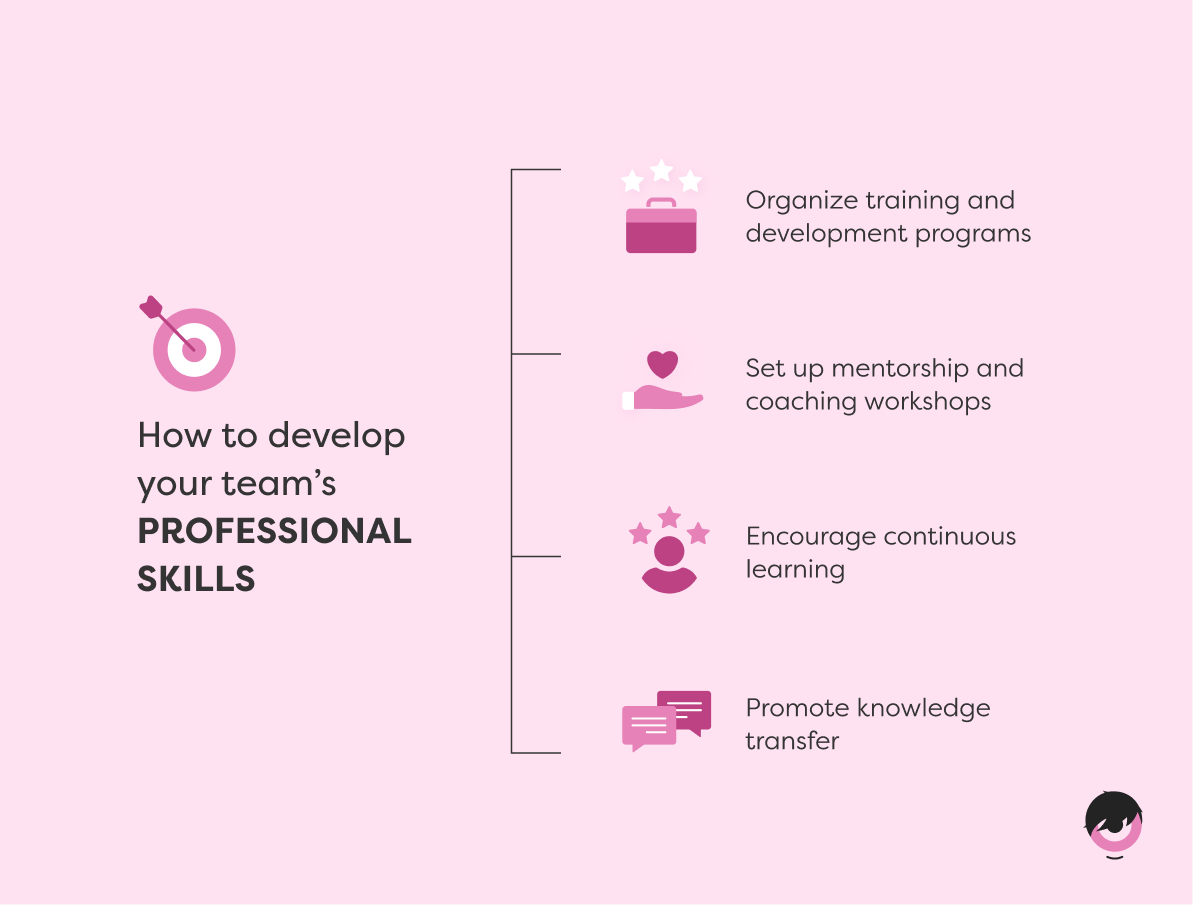Offering training opportunities to employees has become an essential asset for companies aiming to retain top talent and foster productive and engaged teams.
In addition to helping employees acquire and enhance professional skills within the organization, implementing effective training programs boosts motivation and productivity. What’s more, training activities also improve your employer brand!
Of course, these benefits depend on the effectiveness of your skills development plan and how strategically and personally it is tailored. Discover the key elements to include and the steps to follow when creating a training plan, along with concrete examples to guide you.
What should a training plan include?
The first question to ask yourself is: what exactly makes a good training program? Here are the essential components:
- The type of training and the employee or team it targets.
- The estimated budget and time required.
- The training methods and tools to be implemented.
- The objectives to be achieved by the end of the training.
- A detailed schedule (presented as a timeline, for example).
- Evaluation methods to assess results.
- The person responsible for overseeing the training process.

6 Steps to Create an Effective Training Plan
Without further ado, here are the key steps to implement training plans that truly impact your operations and motivate your teams.
1. Identify individual training needs
To create relevant training plans for your teams, start with a skills assessment within your company.
This will allow you to target actions by department or team and determine which training needs are most urgent to ensure organizational efficiency and employee productivity.
This process takes time and effort. You may need to spread the skills assessment project over several months to stay realistic in your timeline, relying on past performance evaluations to guide your strategies. If you’re short on data or resources, consider bringing in an external expert!
2. Align training objectives with organizational goals
Remember, your training plan is a strategic tool to help you achieve your goals. While employee well-being and productivity are essential, their professional development must also align with your organizational interests.
Individual meetings and performance reviews are opportunities to identify the professional skills required for an employee to meet their personal objectives and to ensure the development paths offered are also beneficial for achieving your strategic goals.
3. Choose effective training methods
The chosen training method should match the type of skills to be acquired or enhanced, as well as the realities of the employees and teams involved.
Whether synchronous or asynchronous, in-person or remote, through a dedicated platform or with a specialized trainer—it’s important to evaluate all available training types. Consider the employee’s role and your industry to make the right choice. Involve the employee or team in the selection process and present them with options that align with their interests and positions.
4. Define necessary resources
Before offering professional development opportunities, ensure you have the required budget and know which resources to invest in to meet your goals.
- Will you hire a trainer or invest in training software (LMS)?
- Is your training budget fixed or flexible?
- Do your teams have the time needed to fully benefit from these development opportunities?
These questions are crucial. You must also arrange for business processes to remain unaffected while training is underway.
Finally, plan how to monitor the use of allocated resources to ensure you stay within the defined limits. Allocate time and effort to regularly track training activities and the time and budget devoted to them.
5. Develop a clear and structured schedule
A precise timeline is essential to maintain productivity, adjust quickly if training is irrelevant, and ensure smooth operations.
A well-structured schedule respects employees’ working hours, avoiding stress caused by training sessions overlapping with regular work hours.
Set deadlines for all parties (employer, trainer, and employee) to make training a priority for everyone involved. If needed, arrange follow-up meetings and decide when and how to evaluate the success of your initiatives.
6. Evaluate results and aim for continuous improvement
Evaluating outcomes and validating skills gained is an essential part of a good training management strategy. You can conduct tests or interviews to gauge the positive impact of training on employees’ professional routines.
It’s equally important to identify areas for future improvement, such as skills to deepen or training methods to refine.
Survey your teams to determine whether they found the training opportunities beneficial and relevant. This will allow you to continuously improve your training processes and use your allocated budget wisely, resulting in increased productivity and motivation!
Concrete Training Plan Examples
1. Retail Sector: Customer Experience Training
Objective: Enhance employees’ skills to deliver exceptional customer experiences.
Training Content:
1) Day 1: Introduction and Customer Service Fundamentals
- Importance of customer experience for loyalty.
- Communication techniques and active listening.
2) Day 2: Managing Difficult Situations
- Professional handling of customer complaints.
- Practical role-play exercises to defuse conflicts.
3) Day 3: Upselling and Cross-Selling Techniques
- Identifying customer needs.
- Strategies for suggesting complementary products.
Format: Hybrid training (online and in-store) with evaluations based on customer feedback and sales goals.
2. Technology Sector: DevOps Training
Objective: Train developers and system administrators to collaborate effectively in a DevOps environment. Using DevOps services can also help streamline workflows, automate processes, and give teams the tools they need to deliver software more efficiently.
Training Content:
1) Week 1: DevOps Fundamentals
- Introduction to DevOps and key tools (Docker, Kubernetes, Jenkins).
- Establishing a DevOps culture: collaboration and automation.
2) Week 2: Automation and Continuous Deployment
- Creating and managing CI/CD pipelines.
- Introduction to Infrastructure as Code (IaC) with Terraform.
3) Week 3: Security and Monitoring
- DevSecOps principles: integrating security into development.
- Implementing monitoring tools for performance and reliability.
Format: Practical workshops + theoretical sessions, with a final project. Remember that using code review tools helps teams catch errors early, maintain consistent code quality, and provide constructive feedback, fostering smoother collaboration.
3. Healthcare Sector: Advanced Nursing Training
Objective: Develop advanced clinical skills for nurses, particularly in intensive care.
Training Content:
1) Week 1: Managing Critical Patients
- Rapid assessment and emergency protocols.
- Monitoring medical devices (ventilators, ECG).
2) Week 2: Communicating with Families
- Delivering difficult news with empathy.
- Managing expectations and providing psychological support.
3) Week 3: Leadership in Nursing
- Managing teams in high-stress periods.
- Developing best practices for mentorship.
Format: Clinical sessions with medical simulations, combined with online modules and continuous evaluations.

As an employer, you have the tools to foster skill-building within your company. Keep in mind your legal training obligations which may imply mandatory training initiatives.
We often wrongly view development opportunities as one-off events in an employee’s lifecycle. In reality, they should be a core part of your HR strategy. Invest in continuous training by conducting regular professional development meetings with your teams. This approach will ensure long-term productivity and happiness for your talent!
Streamline your employee development strategy with Folks:
Our HR platform lets you follow training hours and costs!

